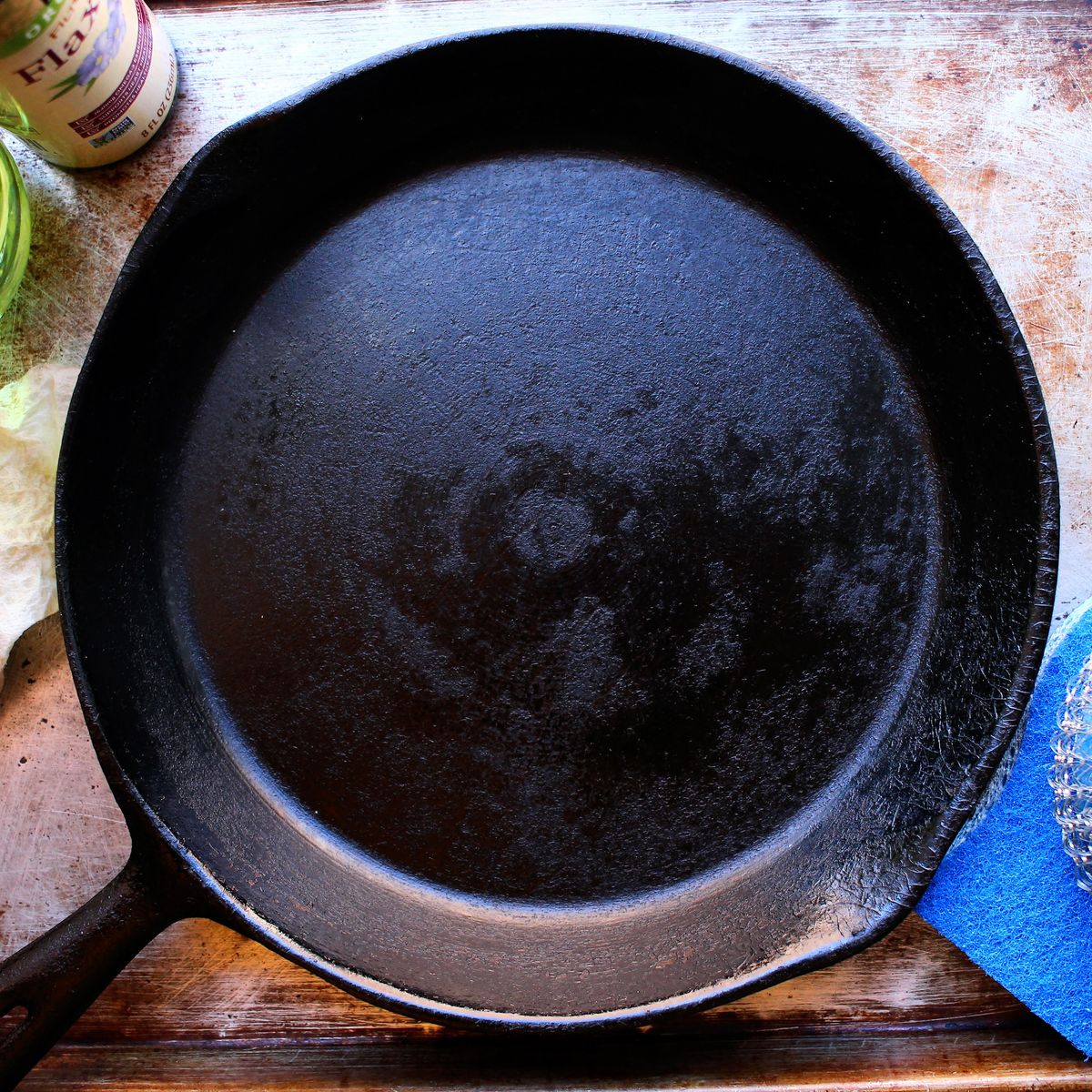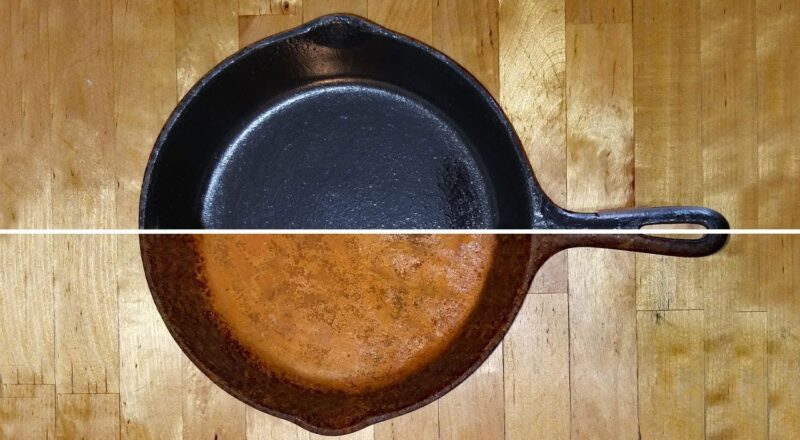Cast iron cookware is a staple in many kitchens. But even a well-seasoned cast iron skillet can develop splotchy seasoning over time. You might ask, ‘How can I fix this?’ We’re delighted to guide you through the process, ensuring your prized cast iron returns to its prime condition.
:max_bytes(150000):strip_icc()/How-to-Season-Cast-Iron-Skillet-3x2-1-bcd280f1703e47e0a59bb62e86a0d53a.png?keyword=how to fix splotchy seasoning on cast iron)
Understanding Splotchy Seasoning
Splotchy seasoning refers to uneven seasoning on cast iron surfaces. This can happen due to inconsistent oil layers or temperature variations during the seasoning process. Knowing why splotchy seasoning occurs is the first step in fixing it.
Why Cast Iron Seasoning Becomes Splotchy
Splotches typically develop when oil pools in certain areas during the seasoning process, instead of forming a smooth layer. This might happen if:
- Oil application is uneven
- Cookware isnt heated uniformly
- Pre-existing residues werent cleaned properly

Preparing Your Workspace
Before jumping into the fixing process, make sure you have:
- A well-ventilated area
- Protective gloves
- Non-abrasive scrub pads
- Paper towel or soft cloth
Step-by-Step Guide
Follow these steps to resolve splotchy seasoning on your cast iron:

Stripping the Old Seasoning
To ensure a smooth application, you must first remove the old seasoning. Heres how to do it:
Materials Needed: White vinegar, water, a large bucket, and non-abrasive scrub pads.
Soaking in Vinegar Solution
Mix one part vinegar with one part water in a bucket. Submerge your cast iron in this solution for about an hour. Check periodically to avoid over-soaking.
Scrubbing the Surface
Remove the cast iron from the solution and scrub away the old seasoning using non-abrasive scrub pads. Rinse thoroughly with warm water.
:max_bytes(150000):strip_icc()/How-to-Season-Cast-Iron-Skillet-3x2-1-bcd280f1703e47e0a59bb62e86a0d53a.png?keyword=how to fix splotchy seasoning on cast iron)
Re-Seasoning the Cast Iron
Now comes the crucial part – re-seasoning the cast iron correctly. Here are the steps:
Drying Thoroughly
Preheat your oven to 200F. Place the cast iron inside for about 10 minutes to dry completely.
Applying Oil Evenly
Once cooled to touch, apply a thin layer of oil (preferably flaxseed or grapeseed oil) all over the cookware. Use a paper towel to wipe off any excess.
Baking the Cookware
Turn up your oven to 450F. Place the coated cookware upside down in the oven, with a baking sheet below to catch any drips. Bake for one hour.
Cooling Down
Allow the cookware to cool down inside the oven. This helps to lock in the seasoning properly.
Maintaining the Seasoning
Proper maintenance is key to avoiding splotchy seasoning in the future. Follow these tips:
- Clean with warm water and mild soap
- Avoid cooking acidic foods in newly seasoned cast iron
- Apply a thin layer of oil after each use
- Store in a dry place
Using Cookware Properly
To maintain that perfect seasoning, proper usage of the cookware is essential.
Cooking Techniques
Always preheat your cast iron gradually to avoid thermal shock. Use moderate heat to preserve the seasoning layer.
Storing Cast Iron
Ensure your cast iron is dry before storing. Store with a paper towel inside to absorb moisture and prevent rust.
Common Mistakes to Avoid
Avoid using too much oil during seasoning. Less is more. Also, steer clear of abrasive cleaners.
FAQ Section
How often should I re-season my cast iron skillet?
Re-season your cast iron skillet as needed, typically every 6-12 months, or when the seasoning shows signs of wear.
Can I cook acidic foods in cast iron?
Avoid cooking highly acidic foods in newly seasoned cast iron. Over time, with sufficient seasoning, it becomes more resilient to such foods.
Why does my cast iron skillet feel sticky?
A sticky surface can result from too much oil being applied during the seasoning. Ensure to wipe off excess oil before baking.
As an Amazon Associate, I earn from qualifying purchases.

